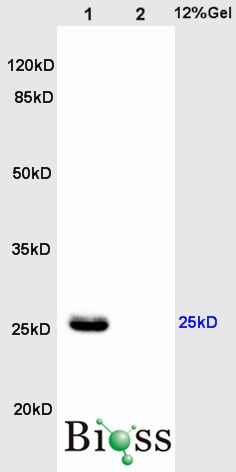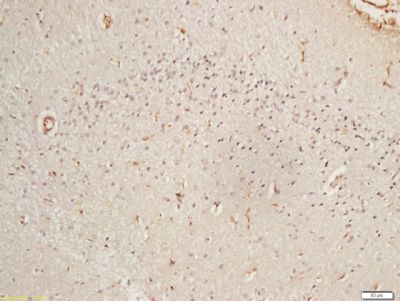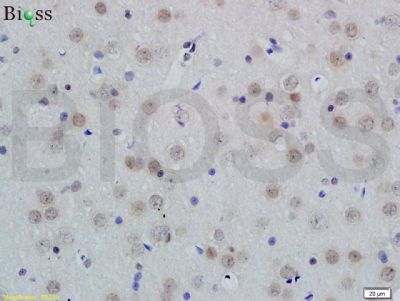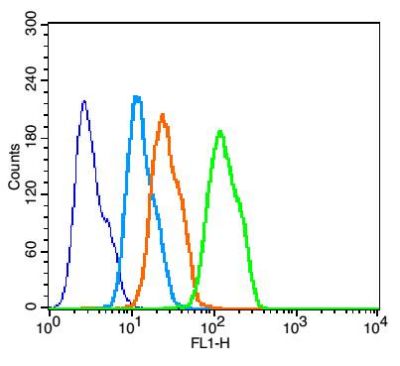[IF=2.629] Zhao Ying. et al. Electroacupuncture Alleviates Visceral Hypersensitivity in IBS-D Rats by Inhibiting EGCs Activity through Regulating BDNF/TrkB Signaling Pathway. Evid-Based Compl Alt. 2022;2022:2497430 IF ; Rat.
[IF=5.546] Min Ai. et al. 1,25(OH)2D3 attenuates sleep disturbance in mouse models of Lewis lung cancer, in silico and in vivo. 2021 Jun 01 WB ; Mouse.
[IF=2.514] Tianshu Wang. et al. Low-Intensity Pulsed Ultrasound Prompts Both Functional and Histologic Improvements While Upregulating the Brain-Derived Neurotrophic Factor Expression after Sciatic Crush Injury in Rats. Ultrasound Med Biol. 2021 Mar;: IHC ; Rat.
[IF=2.733] Zhai X et al. L-lactate preconditioning promotes plasticity-related proteins expression and reduces neurological deficits by potentiating GPR81 signaling in rat traumatic brain injury model. Brain Res. 2020 Nov 1;1746:146945. WB&IHF ; Rat.
[IF=4.562] Seo JH et al. Physical exercise ameliorates psychiatric disorders and cognitive dysfunctions by hippocampal mitochondrial function and neuroplasticity in post-traumatic stress disorder. Experimental Neurology, 2019,322,113043. WB ; Rat.
[IF=3.37] Lu-Lu Xue. et al. BDNF promotes neuronal survival after neonatal hypoxic-ischemic encephalopathy by up-regulating Stx1b and suppressing VDAC1. Brain Res Bull. 2021 Sep;174:131 WB ; Rat.
[IF=3.105] Huan-Tong Wu. et al. Edaravone attenuates H2O2 or glutamate-induced toxicity in hippocampal neurons and improves AlCl3/D-galactose induced cognitive impairment in mice. Neurotoxicology. 2021 Jul;85:68 WB ; Rat.
[IF=1.177] Zhenting Huang . et al. Anti-Cognitive Decline by Yinxing-Mihuan-Oral-Liquid via Activating CREB/BDNF Signaling and Inhibiting Neuroinflammatory Process. 2021 Jan 27 IF,IHC ; Rat.
[IF=4.366] Giulia Federica Mancini. et al. Social Defeat Stress during Early Adolescence Confers Resilience against a Single Episode of Prolonged Stress in Adult Rats. Cells-Basel. 2021 Feb;10(2):72 WB ; Rat.
[IF=2.977] Xiaonan Zhang. et al. The involvement of ADAR1 in antidepressant action by regulating BDNF via miR-432. Behav Brain Res. 2021 Mar;402:113087 WB,IF ; Mouse.
[IF=3.244] Fu XM et al. The Combination of Adipose-derived Schwann-like Cells and Acellular Nerve Allografts PromotesSciatic Nerve Regeneration and Repair through the JAK2/STAT3 Signaling Pathway in Rats. Neuroscience. 2019 Nov 1;422:134-145. ICF&WB ; Rat.
[IF=3.103] Li R et al. Lithium chloride promoted hematoma resolution after intracerebral hemorrhage through GSK-3β-mediated pathways-dependent microglia phagocytosis and M2-phenotype differentiation, angiogenesis and neurogenesis in a rat model. Brain Res Bull. 2019 Jul 17;152:117-127. WB ; Rat.
[IF=1.709] Sunariani J et al. Difference of brain-derived neurotrophic factor expression and pyramid cell count during mastication of food with varying hardness. J Appl Oral Sci. 2019 Apr 1;27:e2036182. IHF-P ; Rat.
[IF=4.94] Li, Hui, et al. "Therapeutic potential of in utero mesenchymal stem cell (MSCs) transplantation in rat foetuses with spina bifida aperta." Journal of cellular and molecular medicine 16.7 (2012): 1606-1617. IHSLCP ; Rat.



